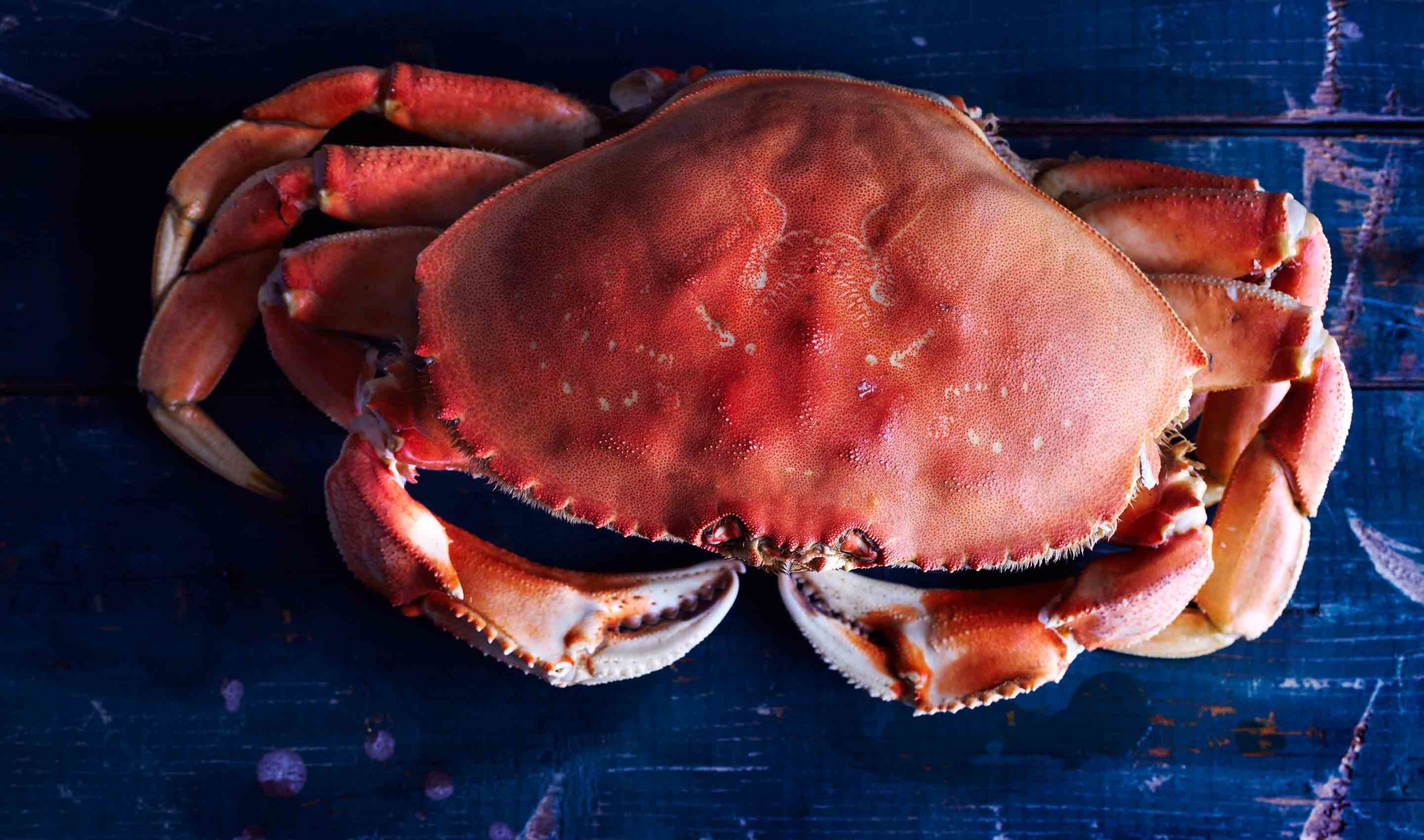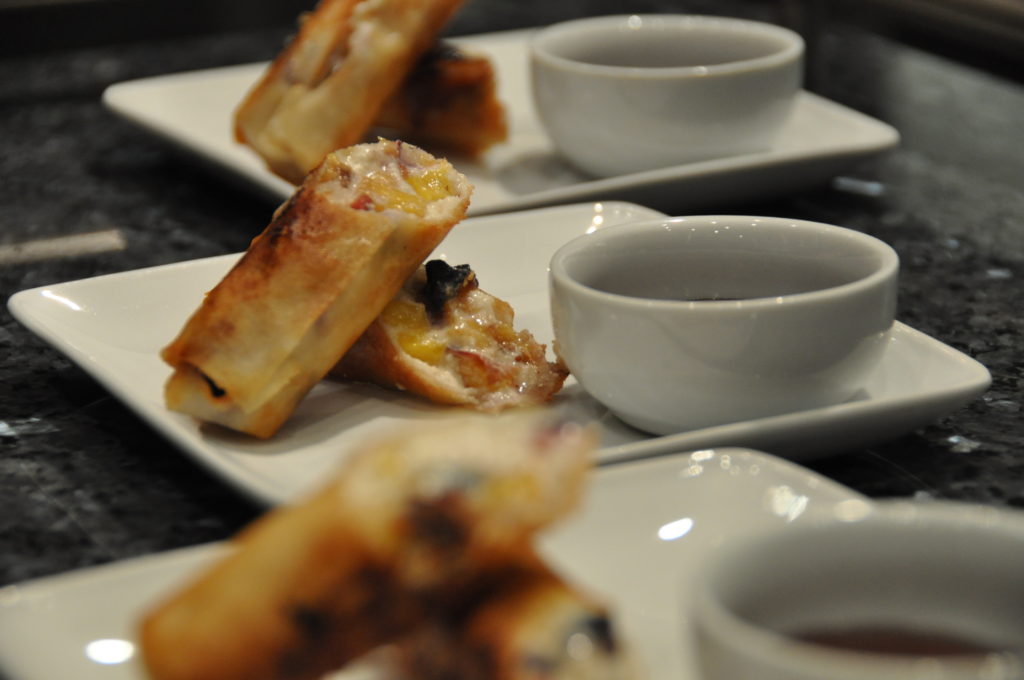
Join PN Level 2 for less than $9 USD/day! Affordable monthly payments now open.

Crab meat is a form of seafood prized for its mildly sweet, tender flesh. You can buy crab meat fresh, frozen, pre-cooked, or in the form of live crabs. Crab meat is an excellent source of protein: three ounces contain over 15g of protein. It is also high in vitamins such as B12, folate, and minerals, including potassium, calcium, and zinc. As with all seafood, fresh is best. If you’ve purchased fresh crab meat, store it in an airtight container in the coldest part of your refrigerator for no more than 2-3 days. Cook or reheat the crab meat gently and enjoy simply with clarified butter, or use in a recipe.
Crab meat is the meat found within a crab.
Many different ‘cuts’ of crab meat can be eaten. Pre-picked crab meat usually represents whole and/or broken pieces of meat taken from all parts of the crab.
Crab meat will look different depending on which cut you select. The cuts range from larger chunks of meat (about the size of a golf ball) to shredded meat.
All of the meat is white with the exception of claw meat, which is brown. The brown meat has a slightly stronger flavor profile than the white meat.
Three ounces of crab meat has around 74 calories, 15.4g of protein, 0.03g of carbohydrates, 0.0g of fiber, 0.9g of fat, and 0.0g of sugar.
Crab meat is high in vitamins B12 and folate. It is also a good source of minerals such as calcium, phosphorus, potassium, and zinc.
There are several types of crabs including blue crabs, soft-shell crabs, dungeness crabs, jonah crabs, king crabs, snow crabs, southern tanner crabs, and stone crabs. The kind of crab you select will depend on geographic location and availability.
In the grocery store, you can purchase live crabs, crab legs and claws, crab meat, or frozen crab meat. Frozen crab, prepared crab meat, and whole legs/claws, are usually pre-cooked.
If buying live crabs, make sure that they are active and that their shells are brightly colored. The crab you select should also feel heavy for its size.
If buying crab legs and claws, choose your own individual pieces if you can. This allows you to pick the freshest pieces, which should be brightly colored. Look for the largest legs and claws possible from the display. Smell them: if they have an ammonia smell, don’t buy them. Pick up the legs if you can – they should feel heavy for their size, and fully intact at the joints.
When selecting refrigerated, pre-picked crab meat, make sure it is fresh and has no ammonia smell to it.
Crab meat also comes in cans. If you choose to go the canned route, make sure you look at the ingredients on the can carefully. Select the can with the fewest number of ingredients and the least amount of salt.
If you’ve purchased fresh crab meat, store it in an airtight container in the coldest part of refrigerator for no more than 2-3 days.
If you’ve just cooked a crab, its meat will be tastiest if you eat it right away. Alternatively, you can store your leftover cooked crab meat in an airtight container in the fridge for up to 2 days or in the freezer for up to 4 months.
If freezing fresh crab meat, keep in mind that the flavor of crab meat is often lost when frozen.
Canned crab can be stored in the can for about a year. Check the expiration date on the can before opening. Once open, you can store uneaten canned crab in the fridge for up to 5 days.
Cooking a whole crab
If you’ve purchased live crabs, begin by putting your crabs in the freezer for 15 minutes to numb them before cooking. Meanwhile, find your largest pot and fill it with water (1L of water per crab). Salt the water very generously and bring to a boil. If desired, you may add 3-4 bay leaves, peppercorns, and paprika to the water for extra flavor.
Once the water is boiling and the crabs have been in the freezer for 15 minutes, use a pair of tongs to grab the crabs from behind and drop them into your pot. Once again, be sure you have 1L of water per crab; if your pot isn’t large enough, just cook one at a time.
Place the crab into the pot of boiling water with legs facing downwards. Allow the crab to cook for about 15 minutes. While the crab is cooking, prepare an ice bath by filling a large bowl or your sink with cold water and ice.
You’ll know the crab is almost ready when you see it floating on top of the water. When you see this, give the crab another 2-3 minutes of cooking time. Once the crab is cooked, use tongs to transfer it from the pot to the ice bath. Let it cool in the ice bath for about 2 minutes. This helps to stop the cooking process and also makes the crab cool enough for you to handle.
Note: Steaming is another option. Follow the directions for freezing the live crabs first, then steam the crabs for 20-30 minutes over a pot of boiling water. Once steamed, place crabs in the ice bath and then follow the instructions below.
Once the crab has cooled, you can begin the cleaning process.
To clean the crab, flip it upside down and locate the “apron”. Break the apron off using your thumb. You’ll then need to remove the carapace (the large exoskeleton). To do this, stick your thumb into the hole that was created when you removed the apron and lift up gently yet firmly. The carapace will detach from the body along with the crab guts. Discard.
Remove the gills from both sides of the body. You’ll also need to remove the mandibles which are the mouthparts at the front of the crab. Simply crack them off and throw them out.
Once you’ve completed this, rinse off all the goo from the body – the only thing you should be left with is shell and meat.
You can now turn the crab upside down and place your thumbs near the midline (where the carapace used to be). Push up with your thumbs and pull down with your hands. This will split the crab in half.
You’ll now be able to remove large chunks of meat from the body. You can also crack open the legs and claws and pick out the meat with a tool.
Enjoy!
Using crab legs or crab meat
The crab legs or meat that you purchase from your grocer are likely pre-cooked; you can enjoy as is or use the meat in your favorite recipe.
For frozen legs/claws, because the meat is still surrounded by the shell, simply put them into a pot of boiling water and boil for about 5-8 minutes (more or less depending on the size of the legs).
Alternatively, you can defrost them first and then snap in half and put them on the grill for about 7 minutes.
If the frozen meat is already removed from the shell, then simply thaw and reheat as indicated on the package, and use as directed in the recipe you are making.

These crab spring rolls make the perfect appetizer and are a definite crowd pleaser!
Prep Time: 20 minutes Cook Time: 30 minutes Yield: 6 to 10 spring rolls
Begin by putting crab in a mixing bowl. Next, preheat a small frying pan on medium heat. Add the butter or coconut oil followed by the shallot, carrot, and celery. Sauté until lightly browned, stirring occasionally. Add the sesame seeds and sauté for 1 minute longer.
Add the whipping cream, salt, pepper, and honey and bring to a simmer. Simmer until the whipping cream has thickened a little and is not runny.
Transfer the contents of the frying pan to the mixing bowl with your crab. Mix well.
Next, assemble and fold the spring rolls.
Begin by placing a spring roll shell on a clean dry surface in the shape of a diamond. Place 1-2 tbsp of filling near the lower edge of the diamond (the point closest to you). Be careful to not overstuff the spring roll.
Next, fold over the bottom corner of the diamond shape so that it covers the filling. Roll slightly so that the filling is well covered and secure. Now, fold over the left diamond point towards the centre followed by the right side (the spring roll will look somewhat like an envelope). Make sure the diamond edges are folded in tightly.
Next, begin to tightly roll the spring roll up towards the tip of the envelope. Using your finger, apply a little bit of water along the top edge of the spring roll – exactly as though you were sealing an envelope. Now close it up and put it on a baking sheet! Repeat until filling is all gone.
Once all of your spring rolls are rolled and on a baking sheet, brush lightly with coconut oil and bake in the oven at 450F until brown and crispy (about 20 minutes).
Store leftovers in fridge.
Enjoy!
Precision Nutrition’s Encyclopedia of Food expands every single month as we highlight new foods and showcase beautiful food photography. If you’d like to stay up to date, simply click this link. From there, we’ll send you a FREE copy of our recipe book. We’ll also let you know when new and delicious foods are added to the site.
Crab meat is a form of seafood prized for its mildly sweet, tender flesh. You can buy crab meat fresh, frozen, pre-cooked, or in the form of live crabs. Crab meat is an excellent source of protein: three ounces contain over 15g of protein. It is also high in vitamins such as B12, folate, and minerals, including potassium, calcium, and zinc. As with all seafood, fresh is best. If you’ve purchased fresh crab meat, store it in an airtight container in the coldest part of your refrigerator for no more than 2-3 days. Cook or reheat the crab meat gently and enjoy simply with clarified butter, or use in a recipe.